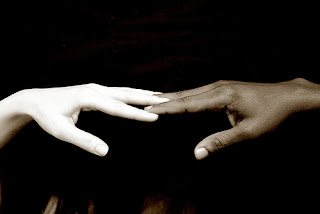Photographs: A window to the past
A photograph is a fraction of a second, captured on film. It is that particular moment which was captured from the womb of time along with eternity. It is a silently expressive medium of visual art that allows one to explore and interpret through keen observation. In the process, visuals give way to thoughts, which conceive written word. Photograph is a window to the past and opens to a forgotten world of old days, people and memories. Every photograph from the olden days invokes an emotion, whether positive or negative. Things change, grow, deplete but the intent with which a moment was once captured, does not get affected. Pictures give us a sneak-peak into the lives of a character or characters, even a different side of us.
This rebuilds many interlinked stories and brings out numerous emotions from the stagnant state of hibernation. This in turn gets the creative juices flowing and the resultant stream of contemplation can be directed towards other media of visual arts as dance, sculptures or drawing, triggering new ideas in a mind opened to varied perspectives, perceptions and opinions. The idea behind photographs would grow but will not grow old as the photographs themselves. Past and present can be juxtaposed, co-existing in the form of photographs. A photograph does not seek attention; it garners attention unlike written word and stays evergreen as a newly born moment or instance.
Historical evidence of our nation or any other nation has been vividly etched in our memory because of photographs from the past, thanks to the advent of photojournalism. Whether it is the freedom struggle or the assassination of freedom fighters, the day of independence or stories of our ancestors from that period; we proudly own a rich legacy in the form of photographs from the past. This way we will hold on to our culture and real-life stories, wherever we may be.
An influential photographer who comes to mind when we think of photographs as a window to the past, is Eugene Atget. He proudly used to say, “I might say that I possess all of Old Paris.” He is noted for his photographs documenting the architecture and street scenes of Paris. He preferred to take photographs of the old, unexplored and sooty corners of the city and used to work early in the morning so as to add an element of timelessness and silence. His works have remained timeless and are a window to Paris of the 20th Century.
Another legendary photographer from the 20th century was Homai Vyarawalla, originally a photographer from Bombay. Most of us have come across her work in History textbooks. She did not believe in the aesthetic appeal but rather worked on capturing the most significant moments in Indian political history. Her subjects were legends: Nehru, Gandhi, Dalai Lama and Jacqueline Kennedy. One of her prominent works, India’s first Republic Day parade that took place outside Purana Quila, has made it to the textbooks along with the golden pages of History.
 |
| Homai with her crew as Indira Gandi strikes an elegant pose |
A photograph from the past is capable of holding the attention of the individuals who prefer to run through life without any inspiration behind the unnecessary perspiration. What could be better than pausing for a while to breathe and reflect upon the beauty and the moments that we tend to overlook or forget after a while.
Before I sign off, here is something on a lighter note :)
.jpg)






.jpg)



Comments
Post a Comment